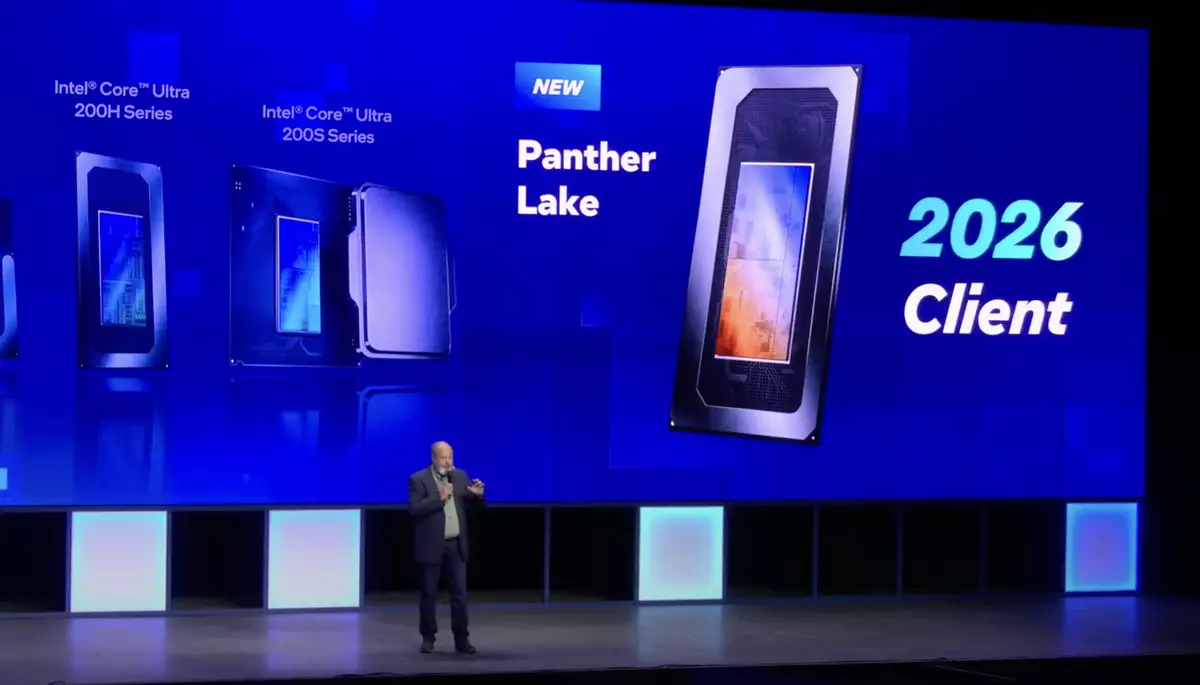Recent announcements from Intel suggest an eagerness to reclaim leadership in the semiconductor space, particularly through their upcoming Panther Lake CPU. During the Intel Vision 2025 event, CEO Lip-Bu Tan presented a vision that resonates with both optimism and nostalgia. However, despite the high hopes, the details surrounding the Panther Lake reveal a journey fraught with challenges and long timelines—undoubtedly a reflection of Intel’s complex history with technology transitions.
Panther Lake’s design ambitions seem impressive on paper, combining the power efficiency of the low-power Lunar Lake with the performance capabilities of Arrow Lake. Jim Johnson, Intel’s head of client computing, has characterized this merging of qualities as pivotal for the contemporary computing landscape. Yet, while it’s easy to bask in the glimmering promise of a product that theoretically provides high power efficiency with exceptional performance, there remain significant uncertainties about its actual rollout and effectiveness in the market.
Understanding the Production Timeline and Delays
One critical nuance worth discussing is the timeline for Panther Lake. Although Johnson indicated that production is on track for later this year, the clear demarcation of a 2026 product raises eyebrows. This distinction implies that, while the manufacturing of the silicon might start soon, substantial time will elapse before end-users can hold laptops featuring the Panther Lake CPUs. It serves as yet another chapter in a long story of delays that Intel is unfortunately becoming known for.
The gap from production to market availability reflects not only logistical hurdles but also technological pitfalls that have dogged Intel for years. Originally projected around the end of 2024, setbacks with the 18A node have contributed to pushing production timelines further into the future. In tech, where timing can be everything, such delays can have lasting repercussions on a company’s reputation and market position.
Furthermore, Intel’s cancellation of the anticipated 20A node should not be overlooked as it underscores pressing challenges within the company’s strategy. Poor yield reports have compounded investor concerns, and the ambitious nature of the 18A node—echoing Intel’s difficult past with its storied 10nm node—raises questions about whether the company has again bitten off more than it can chew.
Technological Challenges and Competitive Landscape
Peering deeper into the technological aspects of the Panther Lake reveals some fascinating yet concerning variables. The introduction of new features like backside power in conjunction with improved transistor density reflects innovative aspirations that may set the stage for future development. But will these innovations elevate Intel above competitors like TSMC, who are continuously launching new nodes?
The advances made by TSMC, particularly with its N3 and forthcoming N2 nodes, heighten the stakes for Intel. While Panther Lake is marketed as groundbreaking, its performance and efficiency will need to make a compelling case against TSMC’s existing and next-generation offerings, which are likely to hit the market around the same time. Intel finds itself in a race not just to deliver but to outperform, with the historical backdrop of its previously failed transitions looming large.
The Road Ahead: A Matter of Reclamation
In a highly competitive industry where every quarter matters, Intel stands at a crossroads. The hopes surrounding Panther Lake signal a desire to reestablish dominance, but the viability of this ambition remains in question. It is worth pondering whether Intel has the resilience to overcome its historical setbacks and whether the technological advancements they promise will indeed translate into measurable benefits for consumers.
As the market waits in anticipation, one can’t help but wonder if the excitement surrounding Panther Lake will ultimately culminate in a renaissance for Intel, or merely serve as another testament to the difficulties of reclaiming technological leadership in an ever-accelerating technological landscape. The journey appears convoluted, and as such, stakeholders are left grappling with both intrigue and skepticism as Intel continues navigating its path forward.

